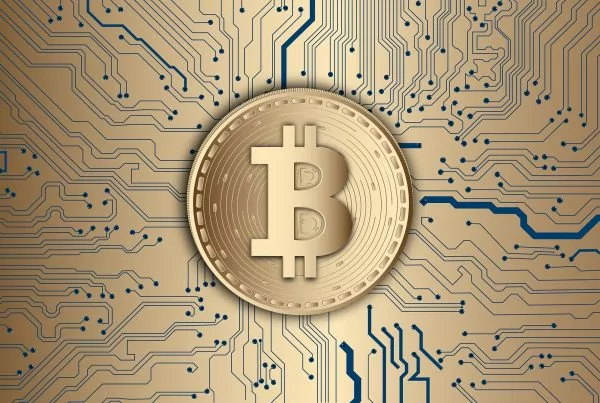
The pricing of all financial assets could, in theory, be reduced to supply and demand. If the demand for an asset remains robust while the available supply diminishes, the price should go up.
It may be more complicated than that in the real world, but it’s certainly bullish for Bitcoin if the big-money financial “whales” are gobbling it up and thereby reducing the supply. While the data from Bitcoin exchange reserves is only one piece of the puzzle, it’s nonetheless crucial information for investors seeking insight into Bitcoin’s next potential price move.
Hedge Funds Buy When Others Sell
It might seem insulting to divide financial traders into “smart money” and “scared money” categories. Yet, there is an undeniable pattern of retail traders panic-selling at the worst possible time while more sophisticated institutional investors buy the same assets at reduced prices.
Knowing this, it’s possible to use trading volume and price action in the Bitcoin chart to detect when the “smart money” is buying what the “scared money” just sold. A prime example of this occurred in mid-January, when the Bitcoin price pulled back from $100,000 to around $90,000, but then rapidly recovered to $97,000 on heavy trading volume.
As this took place, Bitwise European Head of Research André Dragosch explained in an X posting, “Global crypto hedge funds are apparently buying the bitcoin dip.” He further clarified, “1M beta of global hedge funds’ performance to BTC has increased from its recent cycle lows signaling increasing market exposure to bitcoin & other crypto assets.”
Apparently, institutional players haven’t been spooked by the prospect of a Federal Reserve interest rate cutting pause or whatever else might have frightened amateur Bitcoin traders. In December, U.S.-based spot Bitcoin exchange-traded funds (ETFs) – think BlackRock, Fidelity, etc. – bought approximately 51,500 Bitcoins, nearly triple the 14,000 Bitcoins produced by miners that month.
This trend is expected to continue into 2025. Binance CEO Richard Teng shared his thoughts on this trend, “In terms of institutional interest, financial giants like BlackRock and Fidelity entered the crypto business in 2024, and we expect to see more new players next year. More companies are learning about crypto and integrating crypto features like tokenization into their business. This is a trend that has grown for years and we expect to see more development in.”
Exchanges’ Bitcoin Reserves Shrink
Could the recent surge of hedge fund Bitcoin buying activity lead to a supply shock? Unless the demand rapidly diminishes for some unforeseeable reason, there could be an acute Bitcoin shortage afoot in the coming months.
As reported by CoinTelegraph, the collective reserves of Bitcoin across all crypto exchanges, including Binance, declined to 2.35 million Bitcoins as of January 13. For context, this represents a near seven-year low as the exchanges’ Bitcoin reserves haven’t sunk to this level since June of 2018.
Surely, it’s not mere happenstance that the Bitcoin price recovered to $97,000 amid this hedge fund buying spree and supply reduction. Again, it’s the Economics 101 law of supply and demand at work here.
Moreover, the supply shock story could take more twists and turns in 2025 as President-elect Donald Trump has vowed to build a “strategic national Bitcoin reserve.” There’s even been talk of the U.S. Treasury under the Trump administration possibly purchasing 200,000 Bitcoins per year.
Let’s not get ahead of ourselves, though. It’s too early to know whether the U.S. government, under Trump administration, will actually hoard massive amounts of Bitcoin this year.
Still, there’s the potential for a much more drastic supply shock if both hedge funds and the Treasury are stockpiling Bitcoins. This could, in turn, prompt the “scared money” (retail traders) to follow suit and buy Bitcoin based on FOMO (fear of missing out).
Cause and Effect
Bitcoin reserves on exchanges also dropped quickly in mid-November, hitting a six-year low at that time. Then as now, the buying activity of large-scale whales undoubtedly contributed to the Bitcoin supply shortage.
The next thing you know, Bitcoin rallied from around $90,000 in mid-November to an all-time high of $108,268.45 a month later. Could there be a cause-and-effect link between the institutional buying, the shortage on exchanges, and the subsequent Bitcoin price pump?
It’s hard to know for certain when there are so many moving parts involved in Bitcoin price discovery. Besides, even if this cause-and-effect relationship occurred in the recent past, this doesn’t necessarily mean investors should assume it will repeat itself now.
Instead of dusting off the crystal ball and trying to predict near-term price moves, it may be more productive for investors to consider the long-term implications. If the exchanges’ Bitcoin reserves haven’t been this low since 2018, then the supply side of the equation evidently suggests a path to higher prices.
With that, it’s only a question of whether the demand for Bitcoin will increase or at least maintain its current level in 2025. Given the popularity of spot Bitcoin ETFs – and the whales’ mega-scale buying activity, as the data shows – the principles of Economics 101 just might point to a bullish Bitcoin trend this year.



